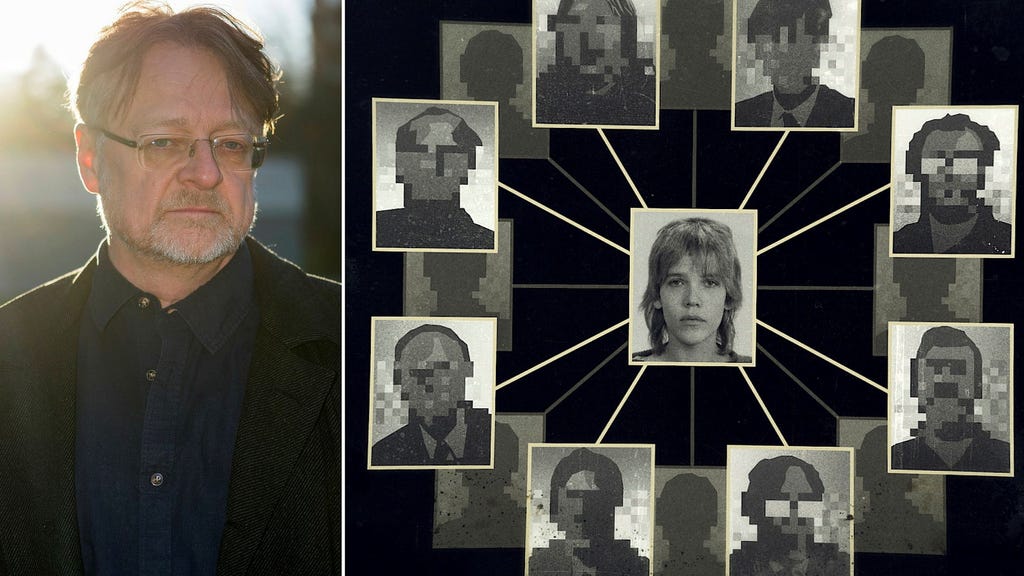Frank Lindblad, a child psychiatrist, publicly disputes the portrayal of his role in the da Costa case presented in the documentary series ”Det svenska styckmordet” (The Swedish Dismemberment Murder). The documentary, produced by Dan Josefsson and Johannes Hallbom, revisits the wrongful conviction of doctors Teet Härm and Thomas Allgén for the murder of Catrine da Costa, whose remains were found in 1984. Lindblad asserts the documentary misrepresents his involvement; however, Josefsson argues that Lindblad played a pivotal role in the miscarriage of justice and is now attempting to evade responsibility.
The documentary unravels the improbable narrative upon which the convictions were based: that Härm and Allgén, accompanied by Allgén’s one-year-old daughter, ritually dismembered da Costa at Härm’s workplace, the Solna forensic medicine station, all in the presence of the toddler. This story originated from Allgén’s wife during a contentious divorce and custody battle. Following an unsubstantiated accusation of incest against Allgén, prompted by a misinterpretation of a diaper rash by a daycare worker, the child underwent multiple medical examinations, none of which revealed any evidence of abuse. Despite the closure of the incest investigation, the mother, fixated on her husband’s guilt, contacted the police again, claiming her now two-year-old daughter identified da Costa in a newspaper photo. She then constructed an elaborate narrative during police interviews, attributing graphic descriptions of the dismemberment to her toddler.
The police accepted the mother’s account despite the lack of corroborating evidence. Concerned about the admissibility of testimony relayed through a two-year-old’s mother, the prosecution sought expert opinions from Lindblad and child psychologist Margaretha Erixon (now deceased). Josefsson contends that Lindblad, during a meeting with police, prosecutors, and forensic experts already biased against Härm, provided the ”scientific” validation they sought. Lindblad’s report, based solely on the mother’s relayed statements, compiled a list of purported quotes from the child, effectively creating what would become known as “the child’s testimony.” Josefsson maintains that without Lindblad’s complicity, the case would likely never have gone to trial, sparing Härm and Allgén from the devastating consequences.
In his rebuttal, Lindblad accuses the documentary of using fragmented information and chronological jumps to create a misleading portrayal of the child’s testimony. Josefsson counters that the very concept of a “child’s testimony” was manufactured by Lindblad himself, based entirely on the mother’s claims. He challenges Lindblad’s assertion about the child’s expressions of violent acts and play suggestive of witnessed trauma, highlighting that these observations were simply reiterations of the mother’s statements. The documentary also reveals Lindblad’s own observations of the child, including a visit to the forensic medicine station, intended to provoke an anxiety response. The child’s unremarkable behavior, interpreted by Lindblad as ”forced indifference bordering on elation” and a “defense mechanism,” further exemplifies his biased interpretation, according to Josefsson.
Josefsson highlights Lindblad’s circular reasoning: the child’s behavior, even seemingly innocuous actions like throwing Lego blocks, was construed as evidence confirming the pre-existing assumption of witnessed trauma. This circular logic continues in Lindblad’s recent defense, where he claims to have considered the mother’s self-doubt—expressed during interrogations where she questioned her own objectivity and the potential for leading questions and fantasizing—as a sign of her “self-reflective ability.” Josefsson argues that this further demonstrates Lindblad’s continued refusal to acknowledge the flaws in his assessment and the mother’s expressed concerns. The documentary also includes excerpts from hours of the mother’s recorded conversations with her daughter, demonstrating her persistent attempts to elicit incriminating statements from the child, recordings available to Lindblad at the time but disregarded.
Josefsson emphasizes the lasting impact of the case. Despite the eventual revelation of the miscarriage of justice 25 years ago, the stigma of guilt continues to haunt Härm and Allgén, largely due to the refusal of key figures, including Lindblad, to admit their errors. Josefsson contrasts Lindblad’s career advancement, fueled by his role in the case, with the devastating and enduring consequences faced by Härm and Allgén, whose careers were destroyed. He challenges Lindblad’s claim of subsequent scientific support for his conclusions, calling it an outrageous assertion that perpetuates the injustice.
Josefsson concludes by accusing Lindblad of clinging to his fabricated narrative and failing to take any responsibility for the lives he damaged. He calls for Lindblad to acknowledge his role in the miscarriage of justice and express remorse for the profound and lasting damage inflicted on the two wrongly convicted doctors. The documentary, according to Josefsson, aims to finally expose the truth and hold Lindblad accountable for his contribution to one of Sweden’s most notorious judicial errors.














